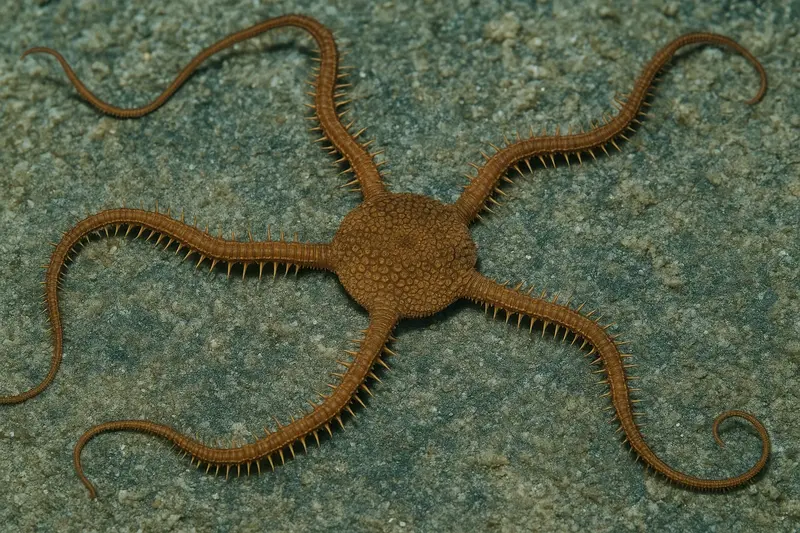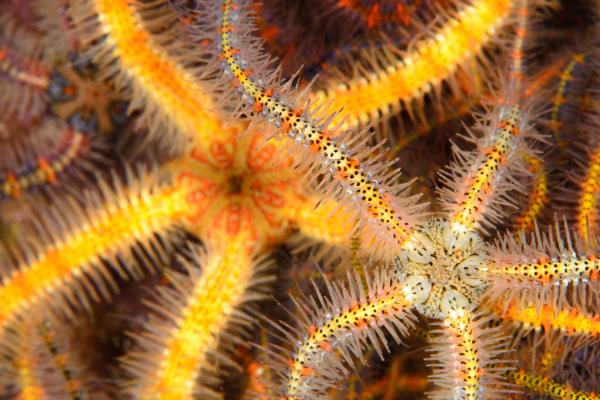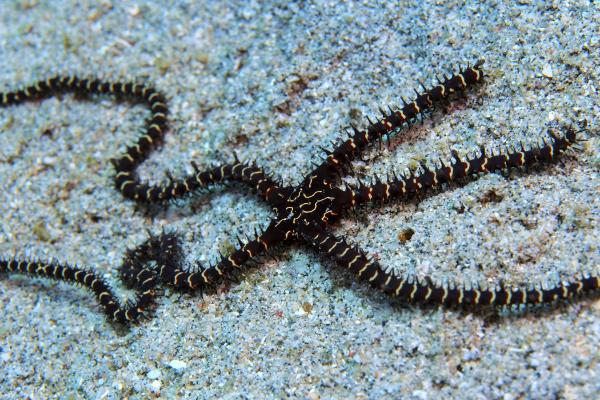Brittle stars are marine invertebrates closely related to starfish, belonging to the class Ophiuroidea within the phylum Echinodermata. Though resembling sea stars, they have distinct anatomical and behavioral features. This article explores what brittle stars are, their species, habitat, feeding habits, reproduction, and key differences from starfish.

Brittle stars, also known as serpent stars, are echinoderms in the class Ophiuroidea. The name is derived from the Greek words "ophis" (snake) and "oura" (tail), referencing their snake-like, flexible arms. Despite their resemblance to starfish, they belong to a distinct class.
They are also called brittle stars due to their delicate arms that easily break off when entangled. Their sensitivity makes them bioindicators of healthy benthic environments.

A central disc contains a calcium carbonate skeleton, from which five slender, highly flexible arms extend (up to 60 cm long).
Their arms are jointed and highly regenerative, allowing regrowth after predation.
Unlike other echinoderms, they move rapidly using their arms, as their tube feet are not used for locomotion.
The water vascular system has a madreporite on the oral surface and lacks ampullae.
The mouth consists of five movable jaws (plates), and the digestive tract is incomplete.
They exhibit extraocular photoreception, enabling light detection and movement toward shaded areas.
There are about 2,000 known species. Notable examples include:
Amphipholis squamata: Tiny species with a disc under 5 mm; arms are four times the disc length and have 6–8 conical spines per arm.
Ophiothrix fragilis: Diameter around 10 cm; disc is subpentagonal with spine-covered plates and 7 lateral arm spines.
Astrospartus mediterraneus: Large disc with deep grooves and pinkish-brown color; arms are branched and granular.
Ophiopsila annulosa: Disc ~14 mm; arms up to 10× disc diameter; lateral plates with 11–12 flattened spines.
Ophiura ophiura: Up to 10 cm wide; short, rigid arms; reduced arm spines; grayish-orange coloration.

They inhabit a variety of marine substrates—from sandy and rocky seafloors to intertidal zones and deep-sea areas. Some species dig mucus-lined burrows in sand and expose only their arms.
They are common in the Mediterranean Sea and Atlantic Ocean, often hiding in rocky shores, algae, or seagrass beds.
They feed on small organisms and organic detritus. Depending on feeding mode, they can be:
Predatory (e.g., Ophioderma): capturing prey with spiny arms—worms, mollusks, and small crustaceans.
Suspension feeders (e.g., Ophiotrix): using mucus nets between arms to trap food particles from water.
Detritivores: ingesting sediment with or without selective filtering.
Most brittle stars are gonochoric (separate sexes), with gonads located along the bursal wall, connected to the coelom. Gametes are released into seawater through bursa rupture, where external fertilization occurs.
Some species are hermaphroditic, exhibiting protandry (male first). Many also reproduce asexually, regenerating from a single arm fragment.
Brittle stars have thin arms that sharply radiate from the central disc, unlike the broad arms of starfish.
Their ambulacral grooves are closed and covered with plates.
Tube feet lack suction cups, serving mainly in feeding rather than movement.
Organs like gonads and digestion are concentrated in the disc, unlike starfish where they extend into the arms.
Their vascular system is simpler and lacks valves, in contrast to the more developed system in starfish.
animal tags: Ophiuroidea
We created this article in conjunction with AI technology, then made sure it was fact-checked and edited by a Animals Top editor.